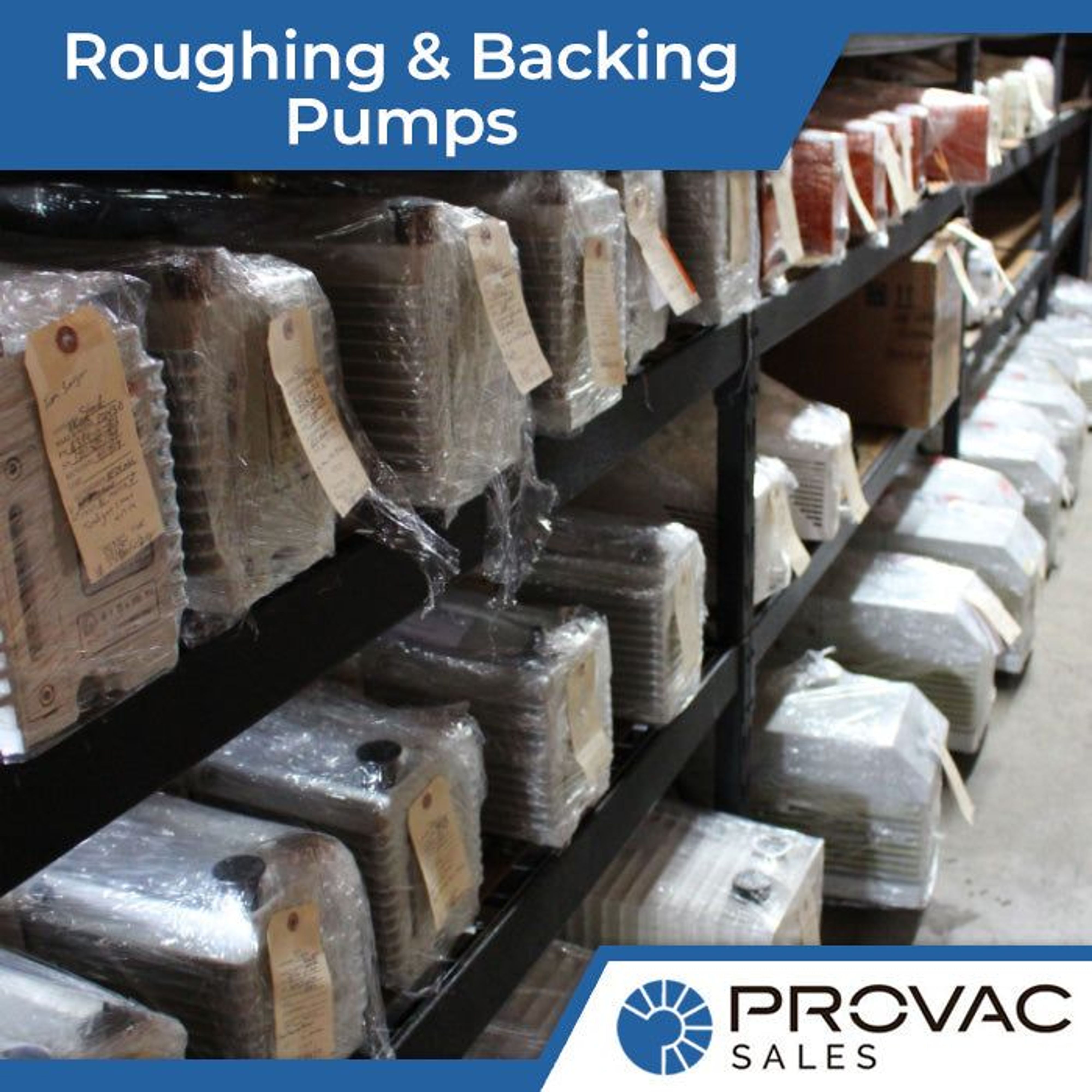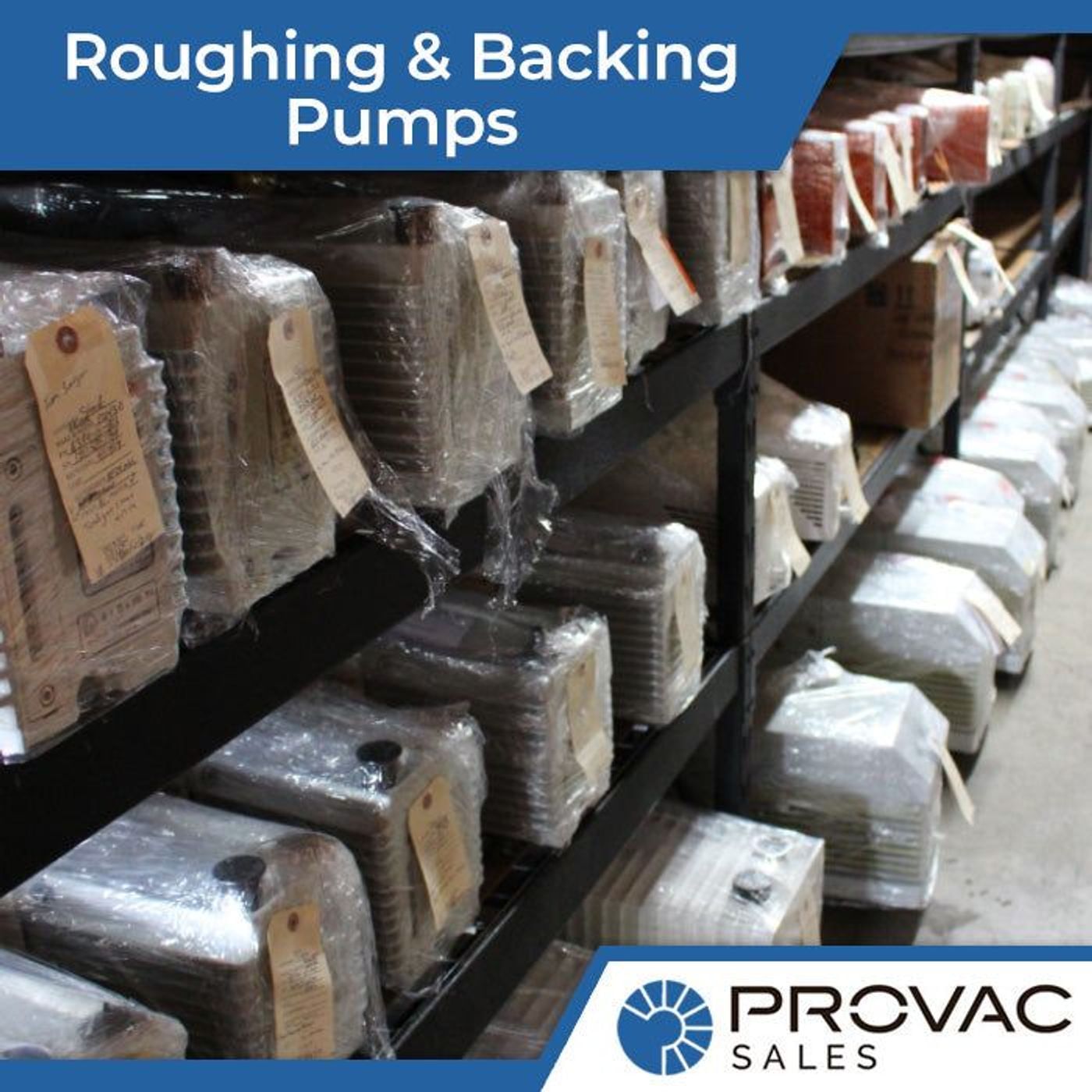It is often a time-consuming task to choose the roughing or backing pump that suits your needs. Buyers have several factors that they must consider when purchasing a backing pump including initial cost, the cost to repair, high-vacuum backing requirements, and power consumption. Many buyers also consider the performance vs. economy trade-off to choose the right pump. But it is essential to focus more on the features of the pump rather than think of the price because if you end up using the wrong model, it can negate all your hard work that went into choosing the pump. There are high chances that the machine will operate outside its maximum performance level and that can damage it.
Roughing pumps operate to create a vacuum anywhere from atmosphere (and slightly above in some instances) down to the three scale (millitorr range). Roughing pumps can be used as stand-alone pumps for applications that require three scale vacuum or less including vacuum packaging, thermoforming, hold down tables, freeze drying, and sample preparation. Roughing pumps can also be used to back high vacuum pumps such as a turbo or diffusion when a deeper vacuum level is required in applications such as semiconductor processes, mass spectrometry, R&D, and more.
Choosing the Right Roughing and Backing Pump
Pumpdown cycle
Both the high vacuum pump and roughing/ backing pump work in tandem for the entire process to work correctly. While buying the roughing and backing pump always make sure that both the units work together to produce the pump down curve that you require for your application. The roughing and backing pump must match the power of the high vacuum pump to produce this kind of effect. Ideally, you should check the specifications of your high vacuum pump before choosing the roughing/backing pump. Different styles of roughing/backing pumps produce different pumping curves.
For example, you may find similar ultimate vacuum and flow rates with a two-stage oil sealed vane pump and multistage piston pump, but their pump-down curves are very different, and so each unit is a better fit for specific applications. Similarly, dry multistage roots and dry scroll pumps have similar flow rates and ultimate vacuum rates, but they also have different pump-down curves. The end-user must analyze real-world conditions that the pump will be operating in to get a realistic understanding of what pump will be the best fit. Keep in mind that pump-down curves and technical specifications provided by the manufacturer reflect the best case scenario under “perfect” conditions. Operating temperature, frequency of operation (start/stopping), process constituents, and load volume should all be considered when calculating the real-world performance of said roughing pump.
Pump Specifics
When selecting the appropriate roughing pump, it is important to consider your process. Will you have a large volume of condensables running into the pump? Do you have any corrosives that will be pumped into the pump? Will the pump be near people, and if so, does it need to be very quiet and produce no oil mist? There are various seal types, purges, and fittings available to address condensables or corrosive chemicals in the process that would normally add excess wear-and-tear to “standard” pump designs. External accessory items such as inlet traps and inlet filters can help remove chemicals/process prior to entering the roughing pump, but they can affect the pumping speed achievable by the vacuum pump. External exhaust filters and mufflers are available to help knock down oil mist and reduce noise in the laboratory/warehouse environment.
Balance Between Operations
A roughing and backing pump performs two distinct operations when it is in motion. It will first rough pump the entire chamber to convert atmospheric pressure to comparatively low pressure. This allows the high vacuum pump to operate smoothly. When this process starts, the roughing pump has to revert to its secondary position to support the high vacuum pump again, but this time it will provide low pressure for the pump to exhaust from the outlet. You need to keep in mind the amount of time the roughing pump takes to convert the atmospheric pressure and provide low pressure. The higher the efficiency, the better it is for the pump. In environments where you require rough vacuum on demand, but not constantly, it is beneficial to add in a vacuum hold tank where the pump can pump down the tank, and vacuum can be removed from the tank on demand. The tank reduces the amount of starting and stopping that the vacuum pump experiences, which can help to add to the longevity of the pump (especially the motor). Turning the pump on and off frequently can cause motors to burn up.
Backing Role
One of the most significant factors to consider while buying a roughing pump is its backing role when high-vacuum is the ultimate goal. A turbo drag, turbo, or drag pump usually operate efficiently when it is within a specific pressure envelope. The inlet pressure of the pump should be low enough so that the pumping arrays, whether it is the drum or disc in the drag pump or rotor and stator in the turbopump can impart a massive move to the gas molecules that are slowly pumped from the system. These molecules are often compressed through the pump, and soon they get exhausted at some other place with reduced pressure. This is the area where the backing pump actively removes them and sends them into the atmosphere.
Keep an eye on the foreline pressure. It should be low enough so that the high vacuum pump can quickly compress the gas that enters into the inlet. Most modern styles of turbo pumps utilize a combination of turbo and drag stages which give the benefit of the speed of turbine stages with increased compression ratios from the drag stages. With this hybrid design, the roughing pumps needed to back the turbo pumps are much smaller in pumping speed and they do not need as deep of a base pressure. Smaller CFM pumps such as diaphragm pumps can now be used to back many turbo pumps, which saves the end user money and space. It is still beneficial to utilize larger CFM pumps when time is a consideration.





